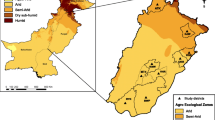Abstract
Counting ticks on one side of a bovine has been widely used to estimate the overall number of ticks; however, the accuracy of this method has not been determined. This work aimed to evaluate the one-side technique for counting ticks, identify bovines with a higher level of infestation, and determine the prevalence of infestation of adults and calves. To evaluate the one-side technique, ticks were counted on both sides of 352 bovines from three farms in nine months, and total numbers were correlated with the numbers counted on the left sides. The intraclass correlation coefficients reached values >0.99 for all farms, independent of the season. These results demonstrated that counting ticks on one-side and multiplying by 2 is a reliable method for estimating the overall number of ticks. To evaluate the level of infestation of various bovines, ticks were counted monthly, for 12 months, on the same bovines from seven farms. An animal was considered highly infested if the Anscombe residuals from a negative binomial GLM were ≥4, at least 2×. The number of bovines with infestation levels higher than expected varied among farms from zero to 3. Using this method, it is possible to evaluate the most infested bovines in order to remove them from the herd. The prevalence of infestation in calves reached 100% in five of the seven farms and 3- to 15-month-old calves had significantly higher infestation than adults.

Similar content being viewed by others
References
Benavides E, Romero Prada J, Villamil J (2016) Las garrapatas del ganado bovino y los agentes de enfermedad que transmiten en escenarios. epidemiológicos de cambio climático: guía para el manejo de garrapatas y adaptación al cambio climático (No. IICA L72). Instituto Interamericano de Ciencia Agr?cola, IICA. Bogotá (Colombia) Universidad de La Salle, Bogotá (Colombia).
Biegelmeyer P, Nizoli LQ, Da Silva SS, dos Santos TRB, Dionello NJL, Gulias-Gomes CC, Cardoso FF (2015) Bovine genetic resistance effects on biological traits of Rhipicephalus (Boophilus) microplus.Vet Par208:231–237. https://doi.org/10.1016/j.vetpar.2015.01.010
Canevari JT, Mangold AJ, Guglielmone AA, Nava S (2017) Population dynamics of the cattle tick Rhipicephalus (Boophilus) microplus in a subtropical subhumid region of Argentina for use in the design of control strategies. Med Vet Entomol 31:6–14. https://doi.org/10.1111/mve.12199
Dohoo IR, Martin SW, Stryhn H (2009) Veterinary epidemiologic research. VER. Inc., Charlottetown, PE, Canada
FAO (2003) Resistencia a los antiparasitarios: Estado actual con énfasis en América Latina
Grisi L, Leite RC, Martins JRDS, Barros ATMD, Andreotti R, Cançado PHD, Villela HS (2014) Reassessment of the potential economic impact of cattle parasites in Brazil. Braz J Vet Parasitol 23:150–156. https://doi.org/10.1590/S1984-29612014042
Lydecker HW, Banks PB, Hochuli DF (2019) Counting ticks (Acari: Ixodida) on hosts is complex: a review and comparison of methods. J Med Entomol 56:1527–1533. https://doi.org/10.1093/jme/tjz094
Medeiros MAD, Barros ATMD, Riet-Correa F, Marques AR, Lopes JRG, Vieira VD, Miraballes C (2019) Identification of Sindhi cows that are susceptible or resistant to Haematobia irritans. Braz J Vet Parasitol 28:465–472. https://doi.org/10.1590/s1984-29612019066
Miraballes C, Riet-Correa F (2018) A review of the history of research and control of Rhipicephalus (Boophilus) microplus, babesiosis and anaplasmosis in Uruguay. Exp Appl Acarol 75:383–398. https://doi.org/10.1007/s10493-018-0278-3
Miraballes C, Aráoz V, Riet-Correa F (2019) Rhipicephalus microplus, babesiosis and anaplasmosis in Uruguay: current situation and control or elimination programs on farms. Exp Appl Acarol 78:579–593. https://doi.org/10.1007/s10493-019-00405-0
Morel N, Signorini ML, Mangold AJ, Guglielmone AA, Nava S (2017) Strategic control of Rhipicephalus (Boophilus) microplus infestation on beef cattle grazed in Panicum maximum grasses in a subtropical semi-arid region of Argentina. Prev Vet Med 144:179–183. https://doi.org/10.1016/j.prevetmed.2017.06.006
Nari A, Hansen JW (1999) Resistencia de los ecto y endoparásitos: soluciones actuales y futuras. 67ª sesión general. Organización Internacional de Epizootias. París, Francia
Nava S, Rossner MV, Torrents J, Morel N, Martinez NC, Mangold AJ, Guglielmone AA (2020) Management strategies to minimize the use of synthetic chemical acaricides in the control of the cattle tick Rhipicephalus (Boophilus) microplus (Canestrini, 1888) in an area highly favourable for its development in Argentina. Med Vet Entomol 34: 264–278. https://doi.org/10.1111/mve.12432
Perinotto WMS, Angelo IC, Golo PS, Quinelato S, Camargo MG, Sá FA, Bittencourt VREP (2012) Susceptibility of different populations of ticks to entomopathogenic fungi. Exp Parasitol 130:257–260. https://doi.org/10.1016/j.exppara.2011.12.003
StataCorp (2019) Stata Statistical Software: Release 16. College Station. StataCorp LLC, TX
Utech KBW, Seifert GW, Wharton RH (1978) Breeding Australian Illawarra Shorthorn cattle for resistance to Boophilus microplus. I. Factors affecting resistance. Aust J Agricult Res 29:411–422. https://doi.org/10.1071/AR9780411
Wharton RH, Utech KBW, Turner HG (1970) Resistance to the cattle tick, Boophilus microplus in a herd of Australian Illawarra Shorthorn cattle: its assessment and heritability. Aust J Agricult Res 21:163–181. https://doi.org/10.1071/AR9700163
Wilkinson PR (1955) Observations on infestations of undipped cattle of British breeds with the cattle tick, Boophilus microplus (Canestrini). Aust J Agricult Res 6:655–665. https://doi.org/10.1071/AR9550655
Wilkinson PR (1962) Selection of cattle for tick resistance, and the effect of herds of different susceptibility on Boophilus populations. Aust J Agricult Res 13:974–983. https://doi.org/10.1071/AR9620974
Acknowledgements
We would like to acknowledge Dr. Javier Sanchez and Dr. Henrik Stryhn for collaborating with the data analysis and Tatiana Saporitti for performing the acaricide resistance tests. The research presented in this publication was supported by funds from the National Agency for Research and Innovation (ANII) under code MOV_IDRC_2018_2_153357.
Author information
Authors and Affiliations
Corresponding author
Ethics declarations
Ethical approval
All procedures performed in studies involving animals were in accordance with the ethical standards of the National Institute of Agricultural Research (INIA) (CEUA; INIA.2018.9).
Additional information
Publisher’s Note
Springer Nature remains neutral with regard to jurisdictional claims in published maps and institutional affiliations.
Electronic supplementary material
Rights and permissions
About this article
Cite this article
Miraballes, C., Taño, M. & Riet-Correa, F. Evaluation of the one-side tick counting technique and of the level of infestation of bovines with Rhipicephalus microplus. Exp Appl Acarol 86, 443–453 (2022). https://doi.org/10.1007/s10493-022-00691-1
Received:
Accepted:
Published:
Issue Date:
DOI: https://doi.org/10.1007/s10493-022-00691-1




